If there’s one thing the digital revolution has taught us, it’s that we shouldn’t get too attached to anything. Technology has a way of seizing long-held ideas and entrenched industries and turning them upside-down.
Disruption is rarely the result of a single gadget or innovation, however. It’s typically when two or more technologies converge that the real changes start to happen.
For this look at the most disruptive high-tech events of the last quarter century, we divided developments into pairs that have formed an effective one-two punch. On the following pages are our picks for the ten technology duos with the biggest impact.
10. DVRs + Entertainment on Demand

Fast-forward to the late 1990s and the introduction of the TiVo and ReplayTV digital video recorders. Time-shifting programs and fast-forwarding through commercials became as easy as pressing a couple of buttons. Suddenly people were no longer shackled to the arbitrary schedules of TV programmers and the obnoxious pandering of advertisers. Cable and satellite providers rushed out their own DVRs, and millions of folks began “TiVo-ing”–even those who had never touched an actual TiVo.
Like the best disruptive tech, DVRs returned control to users–and made consumers hungry for even more control over what they watched, when, and where. In 2005 the Slingbox introduced place-shifting, making it possible to watch your TV (or your TiVo’s content) over any broadband connection. Later that year the video-enabled iPod sealed the deal, and broadcast content was permanently untethered from the tube.
Though iTunes‘ video library was far from comprehensive, it proved that if people get an easy alternative to file sharing, they will pay for what they want. Today, video-on-demand services–including ad-supported ones like Hulu.com that are owned and operated by the broadcasters themselves–are booming. Thanks to TiVo, iTunes, and other similar advances, we now expect our entertainment to be delivered to us wherever we are, whenever we want it, on any device that’s handy.
Disruption: The whatever/wherever/whenever model of media consumption is turning both Hollywood and the consumer electronics industry on their heads, and forcing advertisers to rethink ways to capture our attention.
9. YouTube + Cheap Digital Cameras and Camcorders
When the candid video of former Senator George Allen calling someone a macaca (a monkey) appeared on YouTube, it not only cost him a Senate seat and altered the balance of power in the United States Congress, but it also demonstrated how far viral video had come. The Web is now the first stop for many political candidates and companies trying to spread the word about themselves or their products, and YouTube accounts for more than 60 percent of all video-site traffic, according to Hitwise.com.
YouTube wouldn’t have reached such heights without cheap digital cameras, camcorders, and cell-phone cameras. Several key developments led the way. For example, in 1995 Sony introduced the first digital video camcorders with a FireWire (IEEE 1394) port for high-speed transfers to PCs and Macs (cost: $3000). NEC built the first cell-phone cameras that could capture streaming video in 1999. In 2006 JVC introduced the first digital camcorders to record directly to hard drives.
Now, of course, palm-size camcorders can be had for less than $200, and streaming-video capture is a standard feature in most cameras and camera phones. In fact, the first Pocket Film Festival was held in Paris in October 2005–with the winning entries posted on YouTube, naturally.
Disruption: Digital video has made mini-Hitchcocks of everyone. YouTube and its many cousins give the masses a place to put their masterworks. Journalism, politics, and entertainment will never be the same.
8. Open Source + Web Tools
Wherever open source goes, massive innovation and spectacular growth soon follow. Think of the open architecture of the IBM PC and the open protocols of the Internet. Even Microsoft appears to have succumbed to the irresistible lure of open source (or so the company would like people to think).
Linux and other open-source operating systems have allowed manufacturers to build simpler, cheaper machines, such as the One Laptop Per Child project’s XO Machine and Asus’s Eee PC. Such thin systems will play a key role in enabling cloud computing (see item number 4 on our list). Desktop software offerings, such as the OpenOffice suite and Mozilla’s Firefox and Thunderbird, are free (and often superior) alternatives to Microsoft’s products. And Sun’s Java has enabled the development of rich applications for both the Web and handheld devices.
When open source meets Web-development tools, though, the true disruption begins. Tools such as Apache, JBoss, MySQL, and Ruby on Rails have made it less expensive to develop new products and services and to deliver them across the Internet. That means startups can afford to take longer to develop and refine their products, without the pressure and risks of filing an IPO.
“Web 2.0 is cheaper to build than Web 1.0, and part of that is due to open source,” says Keith Benjamin, managing partner for Levensohn Venture Partners. “Things that would have cost $10 million during the bubble can be done for $500,000 today.”
Meanwhile, the revolution in tools like Asynchronous JavaScript and XML (AJAX) and “semantic markup” has driven a whole new way to build Web sites, says Robert Kanes, a San Francisco-based publishing consultant and former creative director for PC World Communications.
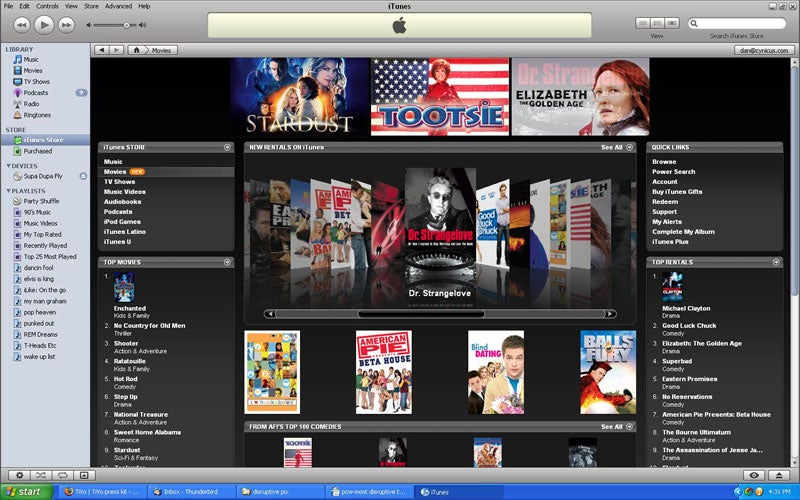
Disruption: The Net is seeing a new boom in Web 2.0 companies that are more stable and more interesting than their dot-com-era predecessors. And with phones using Google’s Linux-based Android operating system slated to appear this year, open source could disrupt the wireless market as well.
7. MP3 + Napster
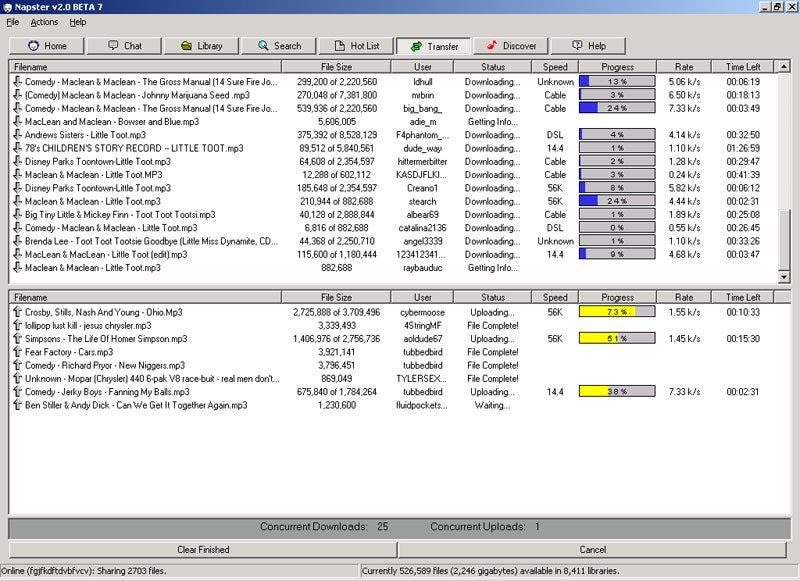
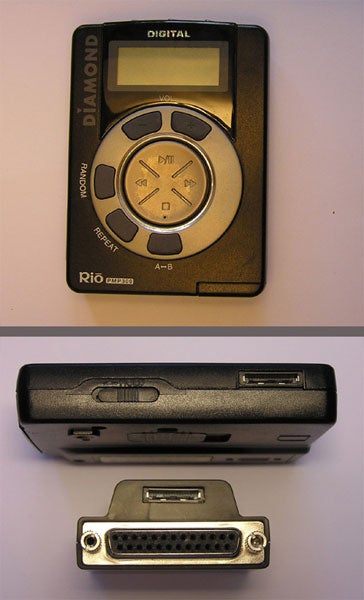
Even if Napster didn’t kill the record industry (my vote goes to the industry’s own greed and stupidity), it changed the business irrevocably. Though the original incarnation of Napster was brought down by legal battles, it paved the way for peer-to-peer networking to develop as a legitimate distribution medium. If not for Napster, BitTorrent might not exist. Ironically, when Nine Inch Nails recently released its Ghosts I-IV album, it used BitTorrent to help distribute the first nine tracks free for the asking.
Disruption: The idea that media should be portable is disruptive. The notion that it should be free–and that some artists can survive, or even thrive, despite a lack of sales revenue–is even more so.
6. Blogs + Google Ads


Unfortunately, with disruption comes drawbacks. Roughly one out of four blogs are bot-created spam blogs (or “splogs”), according to WordPress founder Matt Mullenweg. Click fraud generates bogus income for scammers, spyware infects users’ PCs in order to drive them toward splogs, and search-engine-optimization consultants try to manipulate Google’s PageRank algorithm to their own ends, skewing the results.
Disruption: Blogs give everyone a public voice, while Google gives bloggers a way to fund and market themselves–and the economy of the 21st century is born.
5. Cheap Storage + Portable Memory

In 2005, Toshiba introduced the first 1.8-inch 40GB drive using perpendicular magnetic recording, which stacks magnetic charges on the disk’s surface vertically instead of horizontally. Since then, density rates for hard-drive platters have increased 40 percent annually. Last October, Western Digital introduced a perpendicular drive capable of storing 520GB per square inch, enabling multiplatter hard drives 3 terabytes in size.
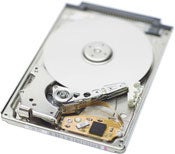
At the same time, improvements in flash memory allow people to carry vast amounts of music and video on iPods and cell phones, freeing everyone from the bonds of their TVs and stereos, and gradually turning wireless telecoms into broadband entertainment providers.
Meanwhile, a promising new nanotechnology called programmable metallization cell (PMC) could produce drives that are a thousand times more efficient than flash at a tenth of the cost, says Michael Kozicki, director of Arizona State University’s Center for Applied Nanoionics, where the technology was created.
“A thumb drive using our memory could store a terabyte of information,” Kozicki told Wired News. “All the current limitations in portable electronic storage could go away. You could record video of every event in your life and store it.”
Disruption: Where would we be today without cheap, capacious, portable storage? No iPods. No YouTube. No Gmail. No cloud computing.
4. Cloud Computing + Always-On Devices
A cloud is brewing on the Net horizon, bringing a storm of new applications. The profusion of cheap storage, software that can run a single massive application across thousands of low-cost servers, and near-ubiquitous Net access have created a virtual supercomputer accessible from your pocket. That’s why companies such as Amazon, Google and IBM, and Microsoft are jostling to offer cloud computing–applications that run on vast server farms instead of on local networks or desktop PCs, delivered across an Internet connection to corporations and consumers. If you’ve ever used Google Docs, Salesforce.com, Yahoo Mail, or Zoho Writer, you’ve experienced cloud computing.

“What I find interesting about Amazon’s Kindle is that by bundling in Sprint’s high-speed Internet access, it’s not so much a book reader as it is the front end to a store,” says Yarmis. “Access to content is a fundamental part of its design.”
Disruption: For enterprises, cloud computing provides the benefits of a data center without the cost and hassle of maintaining one. For consumers, it offers the promise of cheaper, simpler devices that let them access their data and their applications from anywhere.
3. Broadband + Wireless Networks

Fast-forward ten years. Some 55 percent of households in the United States now boast a broadband connection, according to Parks Associates, allowing for rich media, video, and audio to dominate the Internet.
But a $40 to $60 broadband connection really became economically feasible when users could spread the cost of one connection across multiple home computers through Wi-Fi. Later this year a raft of products using the superfast final 802.11n spec will make Wi-Fi viable for sharing video and audio around the home as well. ABI Research predicts that nearly 250 million Wi-Fi-enabled devices will be shipped annually by 2011.
Disruption: Broadband has created an explosion of video and music Web sites and VoIP services, while Wi-Fi is bringing the Net to everyday household appliances such as stereos, TVs, and home control systems. Together, they’re making the connected home a reality.
2. The Web + The Graphical Browser

The graphical browser, invented in 1993 by Marc Andreessen and Eric Bina at the University of Illinois at Urbana-Champaign, gave the Web wings, ultimately turning it into a delivery vehicle for just about everything.
“[The graphical browser] has changed virtually every aspect of the economy and created an entirely new class of major global corporations that did not exist prior to then,” says Richard Landry, a new-media consultant and former editor in chief of PC World.
According to a recent poll by We Media and Zogby Interactive, nearly half of Americans now get their news from the Internet. The writing is on the wall–or rather, the Web.
Disruption: Media firms, publishing companies, and advertisers now think Web first, and broadcast or print second.
1. Cell Phones + Wireless Internet Access
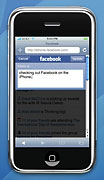
Data, not voice, is driving this disruption. The biggest news from Apple‘s recent announcement of its iPhone software development kit was the addition of an Exchange mail applet that lets business users access their work e-mail from their Apple handsets.
“New Internet-friendly cell phones such as the iPhone and G-Phone [phones built on Google’s upcoming Android operating system] will lower the entry barrier for mobile Internet services, improve mobile Internet experiences, and introduce new business models,” says Kurt Scherf, vice president and principal analyst for Parks Associates. “We’ll begin to see mass-market adoption and form factors diversify to include embedded portable devices such as portable media players and game consoles.”
Mobile Internet-capable phones are poised to become a major advertising platform, as well. “The mobile phone is likely to trump the Internet as the most versatile media platform,” Scherf adds. “The potential of mobile advertising to become an explosively new ad platform is real and colossal.”
Disruption: The ability to be reachable 24/7 is morphing into the ability to surf the Net from any location. And it’s forcing monopolistic wireless companies to open up their networks to new devices and services.
Five Things We’d Like to See Disrupted
- Plastic packaging: What happened to the packaging industry? Why do people need industrial-strength wire cutters to open the shrink-wrap on a $20 mouse?
- Pop-up ads on TV: We really don’t need to see tiny people dancing across the bottom of the screen promoting the next program while we’re watching this one, thanks.
- Rich-media ads on the Web: If we wanted to watch commercials, we’d be sitting on the couch in front of Oprah. Stop with the swirling, scrolling, popping, video ads; they’re not working.
- Digital rights management: When it comes to music, DRM is on life support, and we’re more than happy to stand on the oxygen hose. But for video–especially the HD formats–it’s still an enormous pain. When will Hollywood moguls learn that their customers are smarter than they are?
- Instant messaging: The Berlin Wall fell. Sixteen nations have collaborated on the International Space Station. But folks are still stuck with incompatible IM services and/or kludgy front ends. Can’t we all just get along?
When PC World Contributing Editor Dan Tynan feels too disruptive, he takes a nap.
